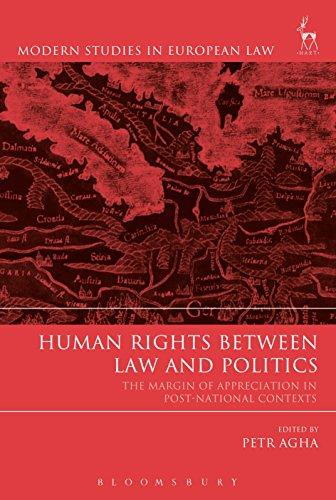Question
Date of the Accident: January 15, 2018 Jurisdiction: San Francisco Superior Court. (400 McAllister St. San Francisco) Limited Jurisdiction (economic litigation) case. Code: Vehicle code
Date of the Accident: January 15, 2018
Jurisdiction: San Francisco Superior Court. (400 McAllister St. San Francisco)
Limited Jurisdiction ("economic litigation") case.
Code: Vehicle code section 21801(a)
Fact Pattern: Motor vehicle accident: driving a passenger sedan like a Ford Taurus, driving a motorcycle. The accident occurred at the intersection of 19th Avenue and Sloat in San Francisco.
Defendant's Version: The defendant is driving eastbound on Sloat and intends to turn left onto northbound 19th avenue. 19th avenue has two lanes in each direction. The defendant was turning into the centermost lane on northbound 19th. As she gets to the intersection, there's a red light, and she moves her vehicle into the left turn pocket. The defendant brings her vehicle to a stop. There are two additional lanes of traffic other than the left turn lane. On the other side of Sloat, there are three lanes for thru traffic (opposite side of the street from where the defendant's car is located).
Defendant claims her light changes to green, not a protected green arrow, indicating that she should yield to oncoming traffic on westbound Sloat. She "commits" in the intersection, bringing her car to a stop midway through the intersection. She observes the light change from green to yellow and says that traffic in the incoming westbound lanes is coming to a halt. She assumes the light on the other side is red and starts turning, a motorcyclist suddenly strikes her car. The impact is to the rear passenger side quarter panel of her vehicle. The motorcyclist goes flying over her car and lands across the intersection from the accident scene.
Defendant claims the motorcycle was in lane #3 (furthest away from the center divide, closest to the sidewalk). Plaintiff says he was in the #2 (middle) lane. The defendant's insurance has refused to pay the plaintiff's claim: denies the claim.
Plaintiff's version: Plaintiff was riding a motorcycle westbound on Sloat, intending to go thru the intersection. He claims that he was in the middle lane of traffic, driving within the posted speed limit. He says that the light was green, and he never saw a yellow light. States that the defendant's car suddenly swings across the intersection, and he tried to brake but couldn't stop. The front of his motorcycle hits the car, and he goes flying over the car, landing at the other side of the intersection.
Other facts: We have three witnesses. Witnesses A, B, and C.
Witness A ("Defendant moved on yellow." ): Is driving a vehicle behind the defendant intending to make the same turn. He observed the defendant pulling into the middle of the intersection and stopping, so he pulled in behind her. Witness A claims to have seen the light change, and the defendant's vehicle starts to turn. Witness A believes that the defendant began to turn while the light was still yellow. He never saw the light turn red, he looked down and never completed his turn because the accident happened.
Witness B ("Defendant moved after red." ): Witness B is in the #1 lane of westbound Sloat. He claims to have seen the light change from green to yellow and doesn't think that he'll make it across the intersection in his vehicle, so he stopped his vehicle. He saw the defendant come through the intersection after he stopped, then saw a motorcycle hit the defendant's car. Implies plaintiff was in the #3 lane because there was a car next to him in the middle lane.
Witness C ("Plaintiff's light was green." ): Witness C is not driving a car, he's a bicyclist. He's in the bicycle lane on westbound Sloat at a bus stop 25-35 yards away from the light, looks up, sees a green light, and the motorcycle goes past him. He says that he saw the motorcyclist hit the defendant's car in the intersection.
Question from a classmate: It's never revealed whether any witnesses are colorblind. However, even colorblind people should be able to tell the color of the lights. It's a good sample deposition question.
The police report identifies one piece of physical evidence: a 20-foot skid mark that ends approximately the motorcycle's length from the impact area. Officer implies that the rear tire of the cycle left the skid mark and still contacted the vehicle. The skid mark is in the #3 lane.
The defendant wasn't physically injured, but the plaintiff was. Plaintiff has $7,000 worth of medical bills (ambulance, x-rays, crutches, physical therapy, RX pain medications), plus he missed three weeks of work with back pain and a severely sprained ankle. Plaintiff makes $1,000 a week. There are also general damages for pain and suffering. The plaintiff has made a complete recovery and no longer has physical complaints.
This is a limited jurisdiction case with $10,000 damages + pain and suffering.
Please draft a case brief to the arbitrator supporting the plaintiff's claim.
Step by Step Solution
There are 3 Steps involved in it
Step: 1

Get Instant Access to Expert-Tailored Solutions
See step-by-step solutions with expert insights and AI powered tools for academic success
Step: 2

Step: 3

Ace Your Homework with AI
Get the answers you need in no time with our AI-driven, step-by-step assistance
Get Started


